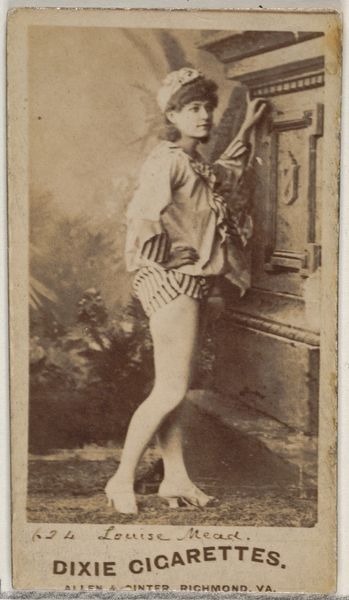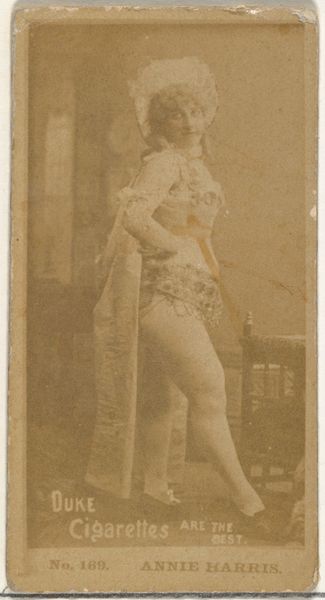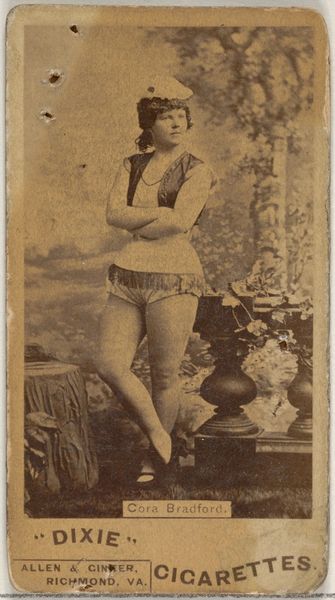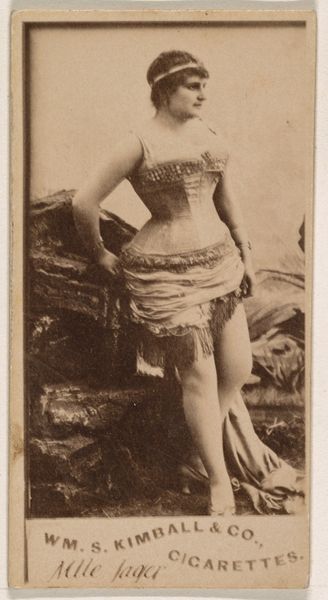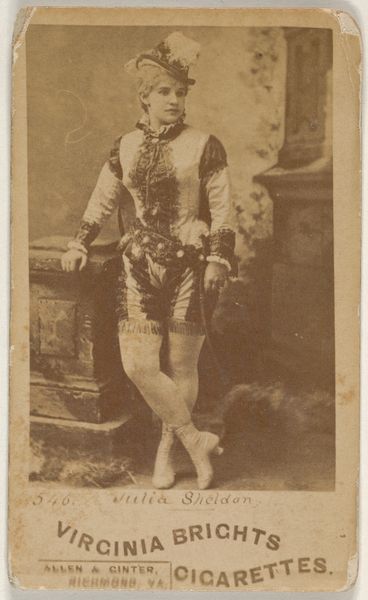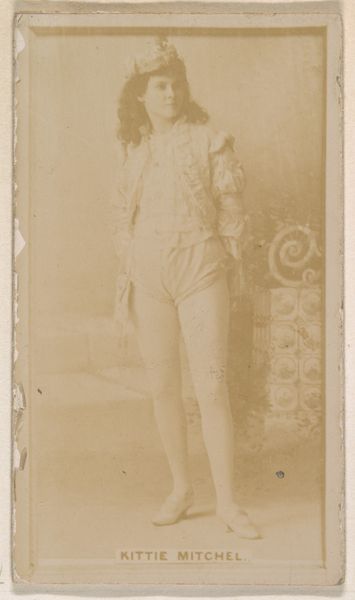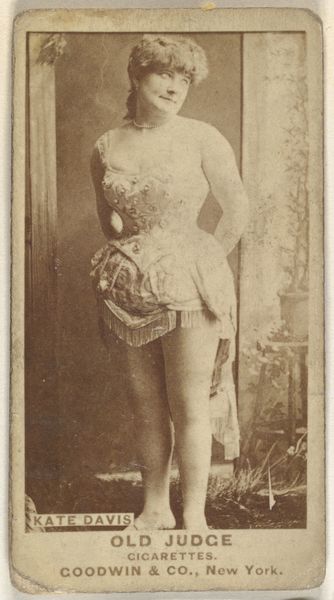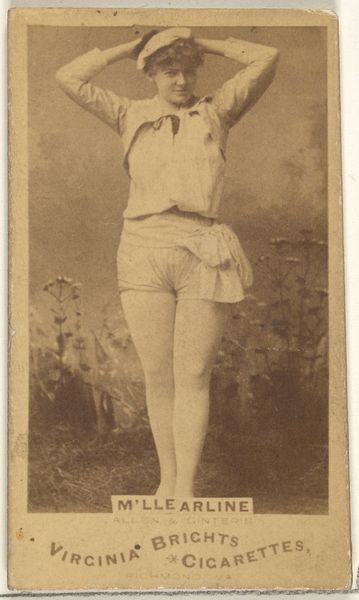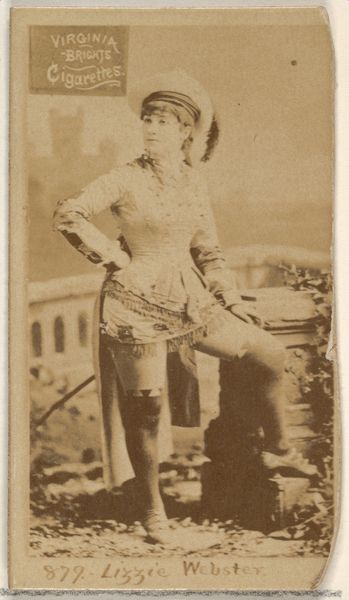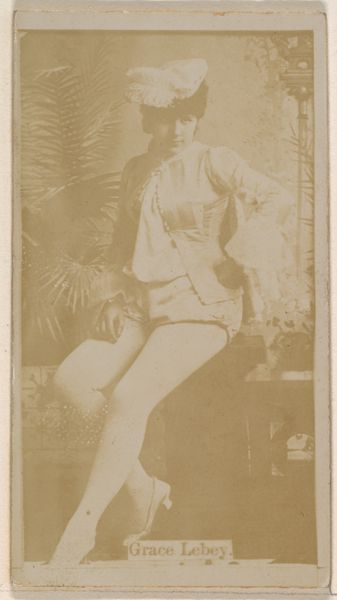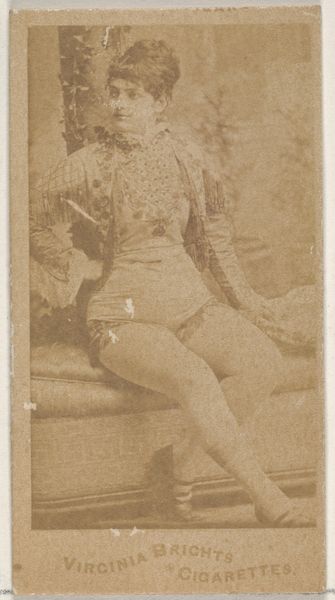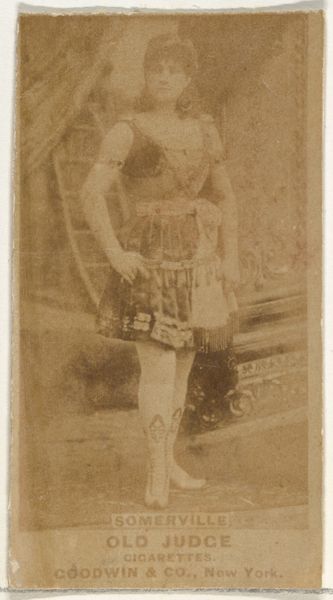
May Bradford, from the Actors and Actresses series (N45, Type 7) for Dixie Cigarettes 1885 - 1891
0:00
0:00
drawing, print, photography, albumen-print
#
portrait
#
drawing
#
water colours
# print
#
photography
#
coloured pencil
#
genre-painting
#
albumen-print
Dimensions: Sheet: 2 5/8 x 1 1/2 in. (6.6 x 3.8 cm)
Copyright: Public Domain
Editor: This is "May Bradford, from the Actors and Actresses series," a trade card produced between 1885 and 1891 by Allen & Ginter for Dixie Cigarettes. It’s a sepia-toned albumen print, depicting a performer in what appears to be a staged setting. It's intriguing how something so seemingly fleeting as celebrity is captured for the purpose of selling cigarettes. What can you tell us about how this object functions within its historical moment? Curator: This piece exemplifies the late 19th-century convergence of celebrity culture, burgeoning consumerism, and the popularization of photography. Tobacco companies, like Allen & Ginter, recognized the allure of associating their product with well-known figures, effectively leveraging fame to drive sales. These cards, inserted into cigarette packs, weren’t merely advertisements; they were collectible items that fostered a relationship between consumer and brand. Editor: So, it's less about the art and more about the branding. Is there a social commentary to be found? Curator: Absolutely, this card embodies several socio-political currents. Firstly, it demonstrates the growing power of mass media in shaping public perception and creating national icons. Secondly, the portrayal of May Bradford, likely an actress, reveals societal attitudes toward women in entertainment – often celebrated yet simultaneously commodified. What kind of narrative might Bradford herself be trying to put forward by accepting such publicity? Editor: I hadn't thought about it from that perspective. The agency she has, or doesn’t have. This makes me wonder, what impact do you think these promotional images had on performers' careers? Curator: It's a complex question. Exposure on these cards certainly increased public awareness, potentially boosting their stage attendance or attracting other opportunities. But it also reduced them to easily consumable images, reinforcing stereotypes or limiting their artistic agency. It raises important questions about artistic control, marketing strategies, and celebrity status in an increasingly image-saturated world, ideas we grapple with even today. Editor: Fascinating. It's eye-opening to consider these tiny cards as little windows into larger social dynamics. I will certainly approach it with different eyes now. Curator: Exactly! By understanding the context, we see these commercial images not just as pretty faces but as active participants in shaping cultural values and perceptions.
Comments
No comments
Be the first to comment and join the conversation on the ultimate creative platform.
